AMD launches Ryzen 8000G ‘Phoenix’ APUs, brings AI to the desktop PC — reveals Zen 4c clocks for the first time
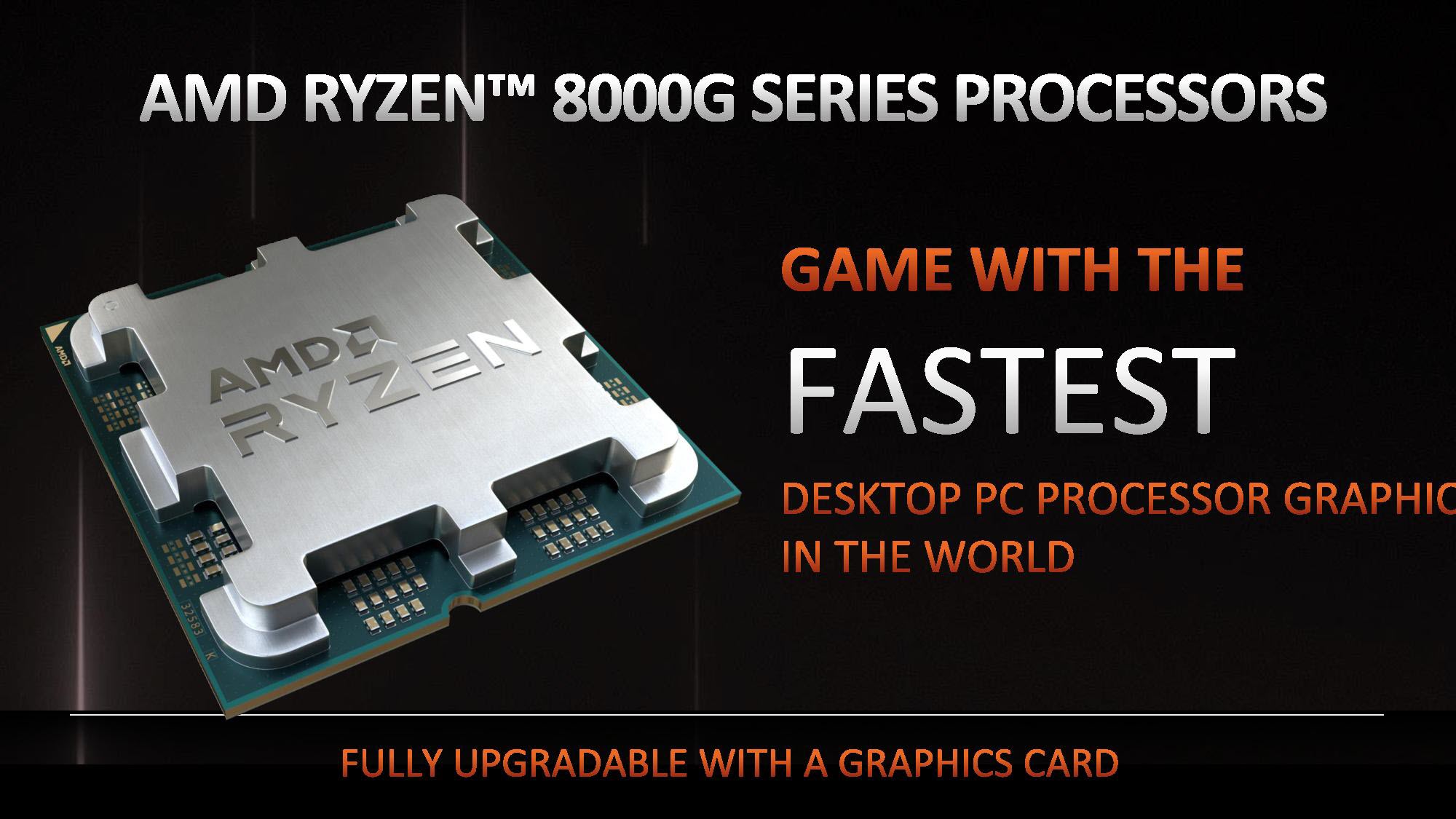
AMD announced four processors in its new Ryzen 8000G ‘Phoenix’ lineup of APUs for its desktop AM5 PCs here at CES 2024 in Las Vegas, Nevada, bringing 1080p-capable integrated graphics to the company’s newest platform for the first time, not to mention unlocking a new lower entry pricing point to the AM5 ecosystem. The two flagship Ryzen 8000G processors are also the world’s first desktop CPUs with an integrated high-performance Neural Processing Unit (NPU) engine to boost performance in AI workloads, beating Intel to the punch again — AMD was also the first x86 chipmaker to bring an NPU to laptops. Now, they’ve come to the desktop with models aimed at taking a spot on our list of the Best CPUs for gaming.
AMD pairs this ‘XDNA’ AI accelerator with the powerful Zen 4 CPU microarchitecture and the RDNA 3 graphics engine to forge the flagship models, while two lower-tier models round out the stack, combining to create compelling lower-cost solutions for entry-level gaming and small form factor builds with Zen 4c cores. The new chips come to market on January 31.
AMD’s previous-gen Ryzen 5000G series, launched back in 2021, set a high bar for entry-level gaming systems on the AM4 platform — one that Intel still hasn’t matched even with its most modern offerings. AMD’s new 65W APU lineup looks to expand on that lead with newer, faster architectures and higher clock speeds. The flagship $329 Ryen 7 8700G has eight cores and 16 threads paired with the Radeon 780M iGPU, while AMD also has a $229 6-core 12-thread Ryzen 5 8600G with Radeon 760M graphics. Notably, these chips arrive for $30 less than their prior-gen equivalents.


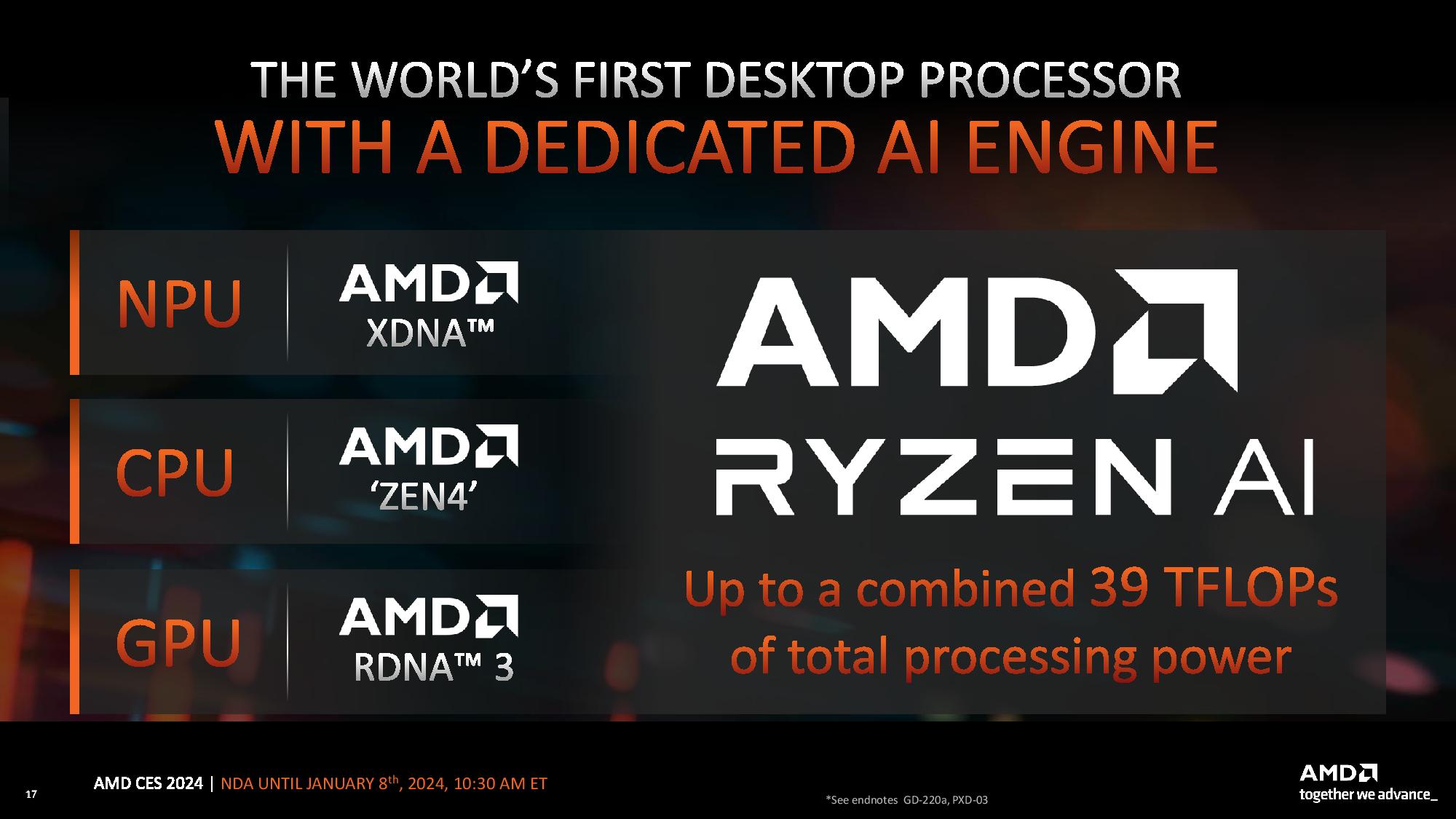

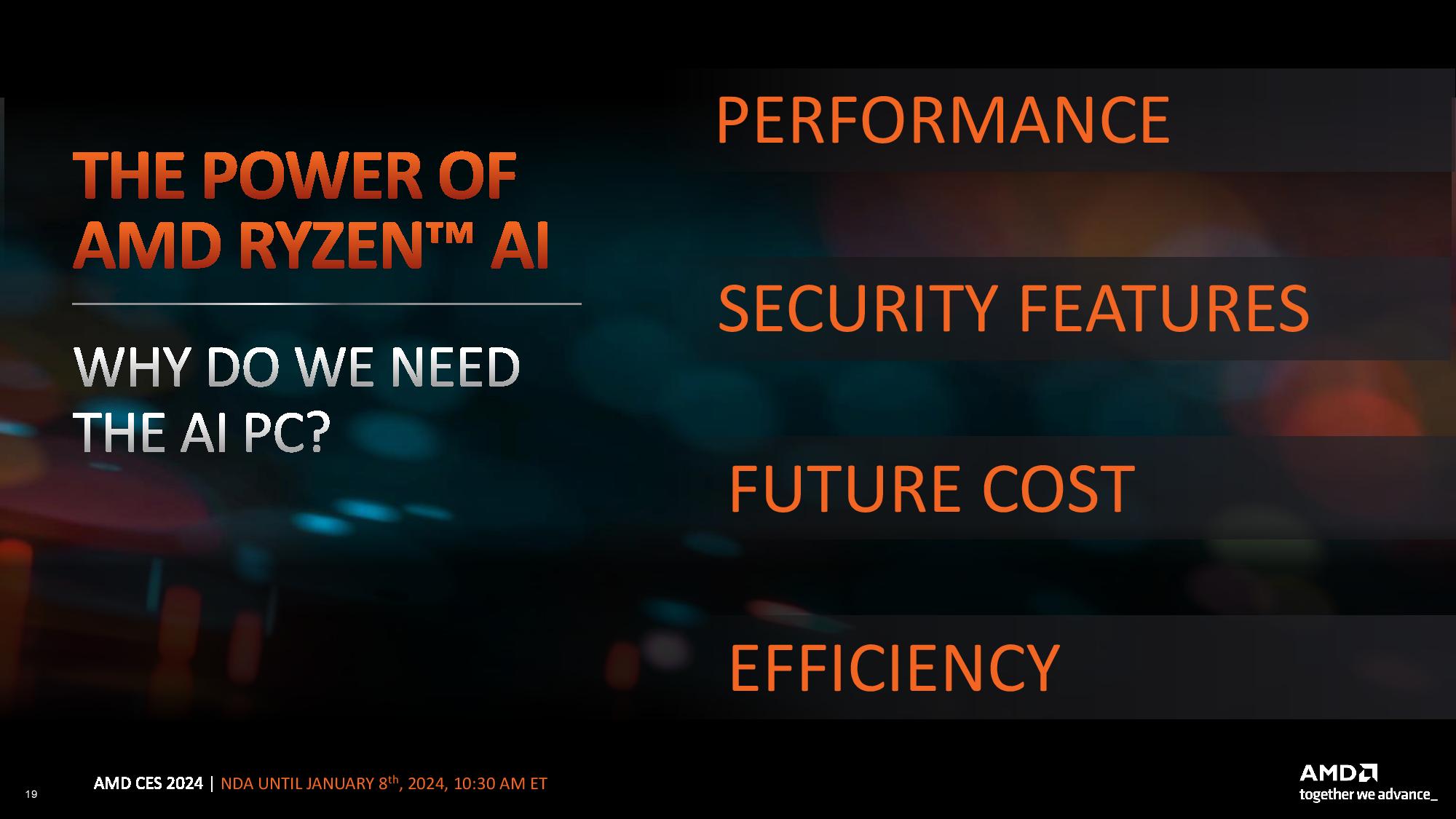

AMD has added a new third mainstream entry for this generation: the $179 6-core 12-thread Ryzen 5 8500G, which comes with two standard Zen 4 cores and four density-optimized Zen 4C cores that operate at lower clock speeds (and yes, as we’ll cover below, AMD is now sharing clock speeds for the Zen 4C cores). This chip also has an even smaller 740M graphics engine than other models, thus offering a lower pricing point of entry. AMD also has a Ryzen 3 8300G with one Zen 4 core and three Zen 4c cores, but this is confined to OEM systems, so you won’t be able to purchase it at retail (at least officially).
As we’ve seen in the past, AMD’s new APUs are based on the same fundamental design as its mobile chips, the Ryzen 8040 Series. However, the processing die has been mounted in a socketable form factor and optimized for the higher power levels offered in desktop PCs. That optimization leads to increased CPU clock speeds across the breadth of the stack compared to the older models, with peak CPU clock speeds hitting 5.1 GHz. The AM5 platform also provides modern amenities, like DDR5, that weren’t available with the prior-gen APUs. The higher bandwidth of DDR5 will certainly unlock more performance from the integrated graphics.
AMD’s new lineup is officially listed as using the Phoenix architecture, but the company pulled in some of the features of the newer Hawk Point models, like a faster XDNA engine, making them more of a crossover between the two designs. AMD also added PCIe 5.0 support, which wasn’t present on either of its mobile variants, meaning these new chips have plenty of unique improvements under the hood.[EDIT: AMD has issued a correction and stated that, contrary to its presentations and slide deck, these chips only support PCIe 4.0]
Intel’s Kaby Lake-G chips were its last competitive entry in this segment. AMD’s graphics engine actually powered those chips, but that (unholy) partnership between the two companies has long since been scuttled. Intel is focused on offering refreshes of its existing 13th-Gen desktop PC processors lineup this year, so we don’t think the company will have a competitor in this space any time soon. That leaves AMD with an uncontested advantage in this segment, especially given that it includes a bundled cooler with all these new processors. The previous-gen 5000G models have long been one of our favorites on our list of the Best CPUs for gaming, and it looks like the newer gen will be just as impressive. Let’s look at what the new lineup has to offer.
Get Tom's Hardware's best news and in-depth reviews, straight to your inbox.
AMD Ryzen 8000G Series Pricing and Specifications
As you can see in the table below, AMD has greatly improved CPU clock speeds on the three models that have prior-gen comparables, though the Ryzen 8500G and 8300G come with a few caveats. AMD has also significantly improved the iGPU with the step up to the RDNA 3 architecture, which boasts more GPU cores (up to 12CU) and up to 900 MHz higher GPU clock speeds to power what will be impressive gen-on-gen gaming improvements.
AMD says the 8000G series can handle most AAA games at 1080p, albeit at reduced fidelity settings. These chips aren’t intended to compete with or replace discrete GPUs, but they should deliver unmatched iGPU performance on the desktop, and you can also add a discrete GPU in the future if you want to upgrade. The chips also support several of AMD’s newer features, like Hyper-X and Fluid Motion Frames.
| CPU | Arch. | Price | Cores/ Threads (Zen 4 + 4c) | Base/ Boost Freq. (Zen 4 cores) | Base/ Boost Freq. (Zen 4c cores) | TDP | L3 (MB) | GPU / Cores | GPU Freq. (MHz) |
| Ryzen 7 8700G | Zen 4 | $329 | 8 / 16 | 4.2 / 5.1 | N/A | 65W | 24 | Radeon 780M - 12CU | 2900 |
| Ryzen 7 5700G | Zen 3 | $359 | 8 / 16 | 3.8 / 4.6 | N/A | 65W | 16 | RX Vega 8 | 2000 |
| Ryzen 5 8600G | Zen 4 | $229 | 6 / 12 | 4.3 / 5.0 | N/A | 65W | 22 | Radeon 760M - 8 CU | 2800 |
| Ryzen 5 5600G | Zen 3 | $259 | 6 / 12 | 3.9 / 4.4 | N/A | 65W | 16 | RX Vega 7 | 1900 |
| Ryzen 5 8500G | Zen 4 + Zen 4c | $179 | 6 / 12 (2 + 4) | 4.1 / 5.0 (3.5 GHz global base) | 3.2 / 3.7 | 65W | 22 | Radeon 740M - 4CU | 2800 |
| Ryzen 3 8300G | Zen 4 + Zen 4c | OEM only | 4 / 8 (1 + 3) | 4.0 / 4.9 (3.4 GHz global base) | 3.2 / 3.6 | 65W | 12 | Radeon 740M - 4CU | 2600 |
| Ryzen 3 5300G | Zen 3 | OEM only | 4 / 8 | 4.0 / 4.2 | N/A | 65W | 8 | RX Vega 6 | 1700 |
The Ryzen 8000G series moves to the Zen 4 CPU microarchitecture, while the prior-gen had Zen 3. The improved IPC is complemented by much higher boost clocks, too: The Ryzen 7 8700G moves up from a 4.6 GHz peak with the prior generation to 5.1 GHz, a substantial increase. The newer design also brings much more cache, with the Ryzen 7 model wielding 24MB of L3 compared to 16MB with the prior-gen. In all, AMD has more cache and higher clocks across the stack.
AMD’s Ryzen 5 8500G has two Zen 4 cores paired with four density-optimized Zen 4c cores, while the Ryzen 3 8300G has one Zen 4 core with three Zen 4c cores. As with Intel's E-cores, AMD's Zen 4c cores are designed to consume less space on a processor die than the 'standard' performance cores (in AMD's case, Zen 4) while delivering enough performance for less demanding tasks, thus saving power and delivering more compute horsepower per square millimeter than was previously possible (deep dive here). But the similarities end there. Unlike Intel, AMD employs the same microarchitecture and supports the same features with its smaller cores. Still, the Zen 4c cores operate at lower clock rates and thus offer less peak performance than standard cores.
In response to our queries, AMD has begun disclosing the clock speeds for the Zen 4c cores. The Zen 4c clock speeds are revealed in the chart above, and the maximum boost frequency of the Zen 4c cores is actually lower than the base frequency of the standard Zen 4 cores, highlighting why this is an important spec to divulge. AMD denotes its clock speeds slightly differently than Intel, with a ‘global’ (our terminology) base speed for the entire chip (we’ve followed up for more detail on this new spec), then separate base/boost speeds for the two types of cores. Notably, this new ‘global’ base clock speed is also higher than the base clock speeds of the Zen 4c cores. We’ll do extensive testing on this new setup when the chips come to the lab. Also, look for further coverage of the new specifications on these pages in the coming days.
Surprisingly, despite the addition of the Zen 4c cores, AMD has assigned a 65W TDP to all of the chips in the 8000G series.
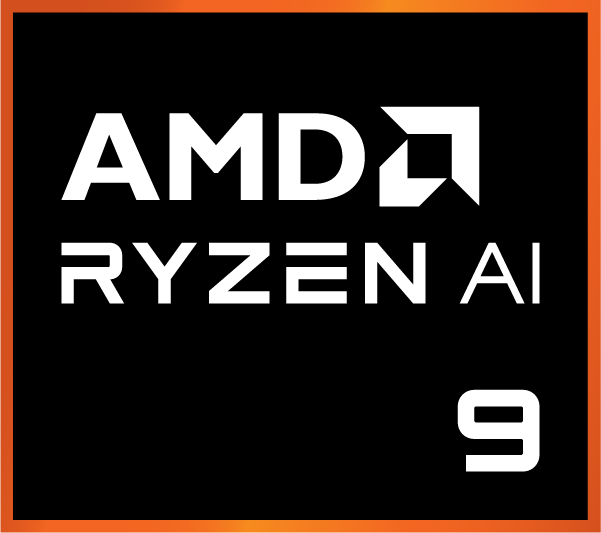
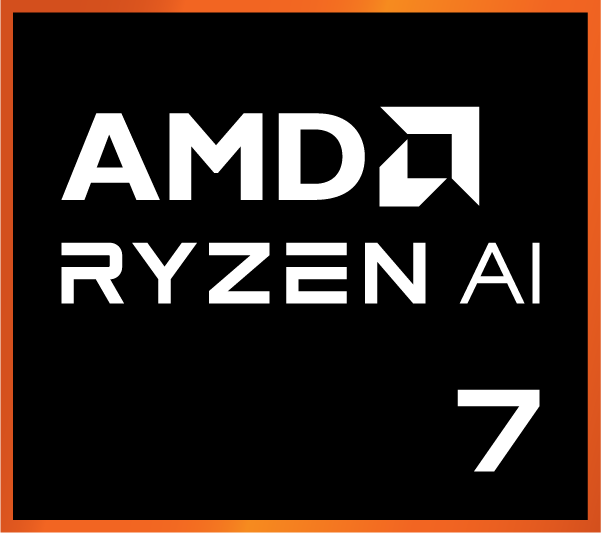
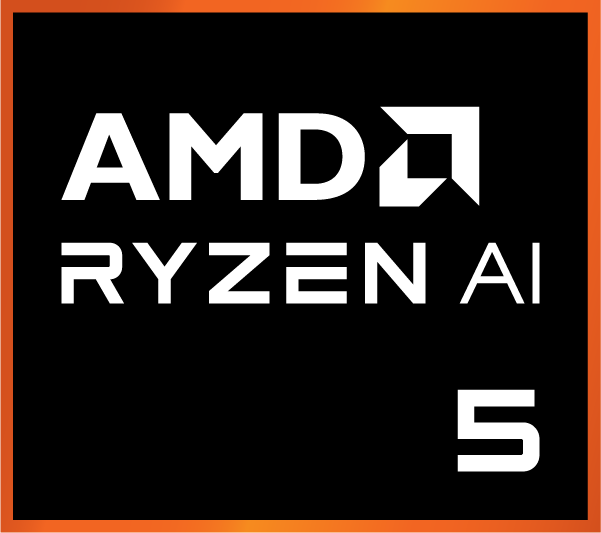


AMD also addressed another of our queries and is also now revealing the NPU AI engine clock speeds. The Ryzen 7 8700G and Ryzen 5 8600G’s XDNA NPUs run at 1.6 GHz, which is 60% faster than the NPU speed on the inaugural Ryzen 7040 mobile series (those processors never came to desktop). This shows that while the 8000G series is formally referred to with the codename Phoenix, it ropes in some of the improvements of Hawk Point. The XDNA engine delivers roughly the same 16 TOPS of performance as the mobile variants, but some workloads could have slightly higher performance due to the PC’s higher power thresholds. The Ryzen 5 8500G and Ryzen 3 8300G do not come with the XNDA AI engine, so they won’t have the Ryzen AI badge on their product box.
Perhaps the biggest change comes in the form of DDR5-5200 support, a big step forward over the prior-gen, which only supported DDR4-3200. The higher DDR5 bandwidth will help feed the bandwidth-hungry integrated GPU. The chips also support the PCIe 5.0 interface, a huge improvement over the PCIe 3.0 found on the prior-gen APUs. Notably, AMD’s latest mobile variants, which largely share the same design, only support PCIe 4.0. That means AMD has either updated the PCIe root complex with the 8000G desktop models, or merely runs the PCIe lanes on the mobile models at a lower speed than it could (which would make sense for mobile). [EDIT: AMD has issued a correction and stated that, contrary to its presentations and slide deck, these chips only support PCIe 4.0] AMD’s APUs have traditionally had fewer lanes than the standard desktop equivalents, but we aren’t sure of the number of lanes available with the new processors. AMD will follow up with further details soon. [EDIT: We have now obtained the correct PCIe 4.0 lane counts, as shared below.]
- Ryzen 7 8700G | 20 PCIe lanes (16 usable)
- Ryzen 5 8600G | 20 PCIe lanes (16 usable)
- Ryzen 5 8500G | 14 PCIe lanes (10 usable)
- Ryzen 3 8300G | 14 PCIe lanes (10 usable)
All three retail 8000G chips come with bundled coolers: The Ryzen 7 8700G comes with the venerable Wraith Spire, while the 8600G and 8500G come with the Wraith Stealth.
AMD Ryzen 8000G Series Gaming and Productivity Performance Benchmarks
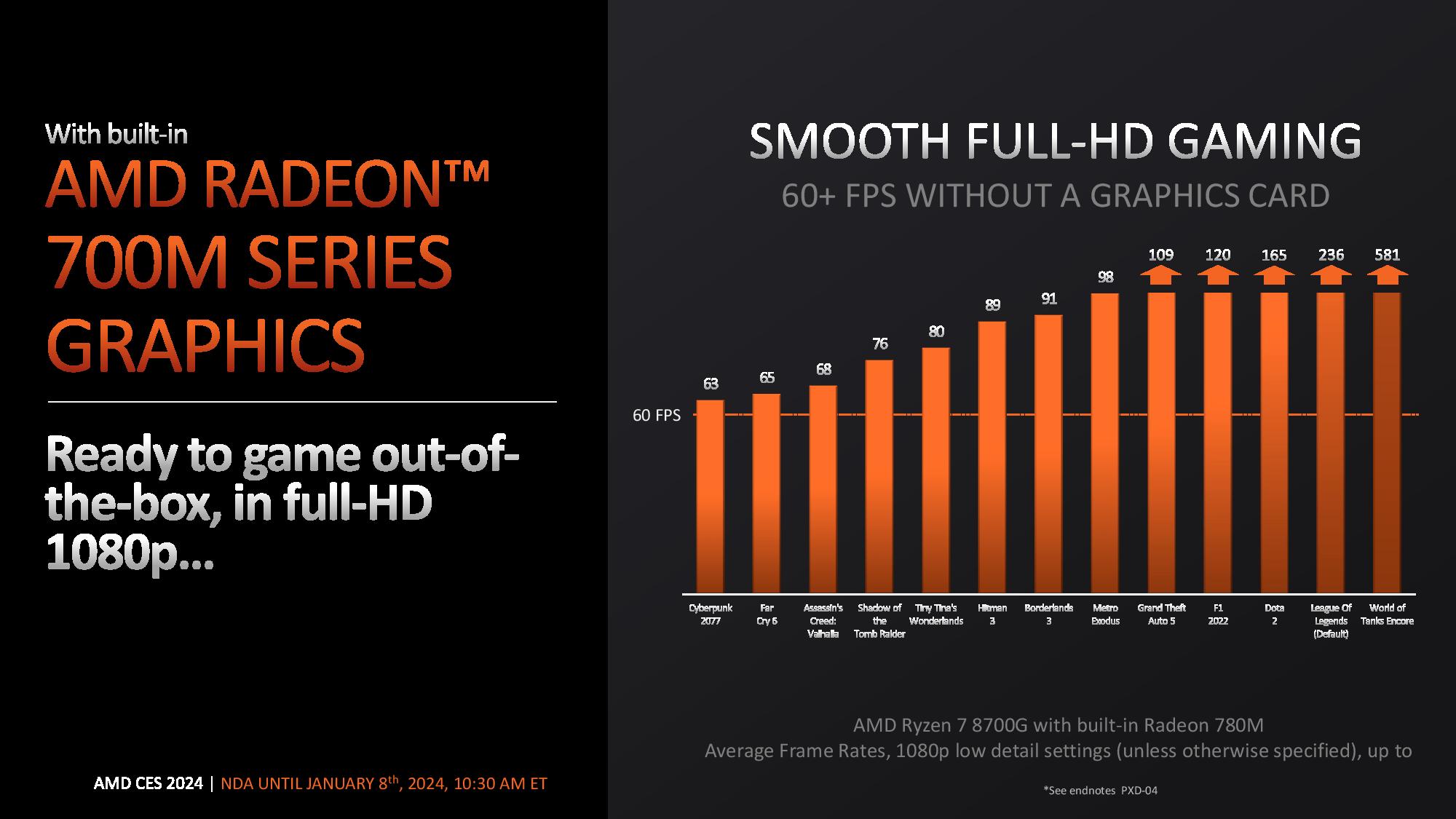

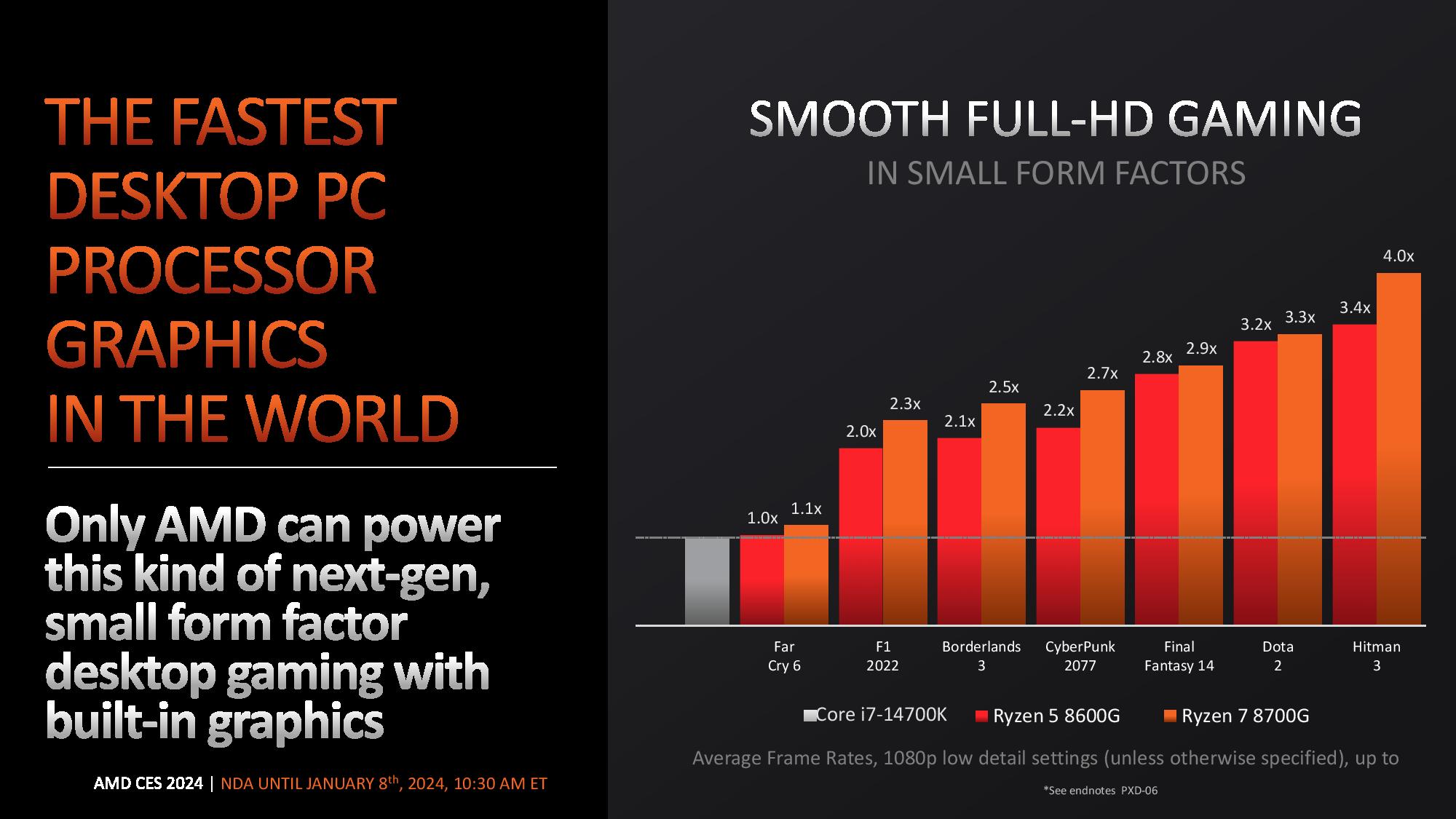
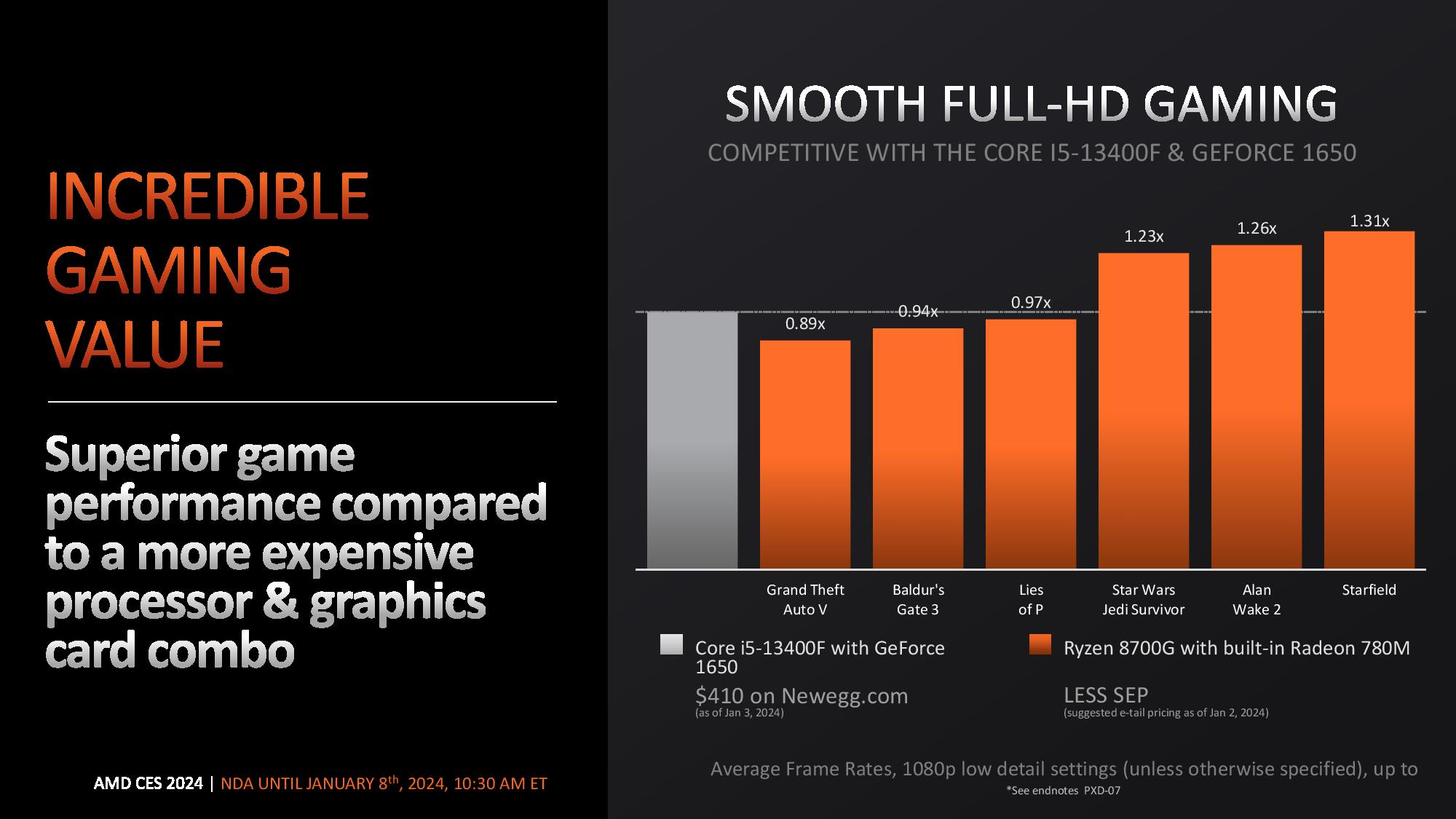
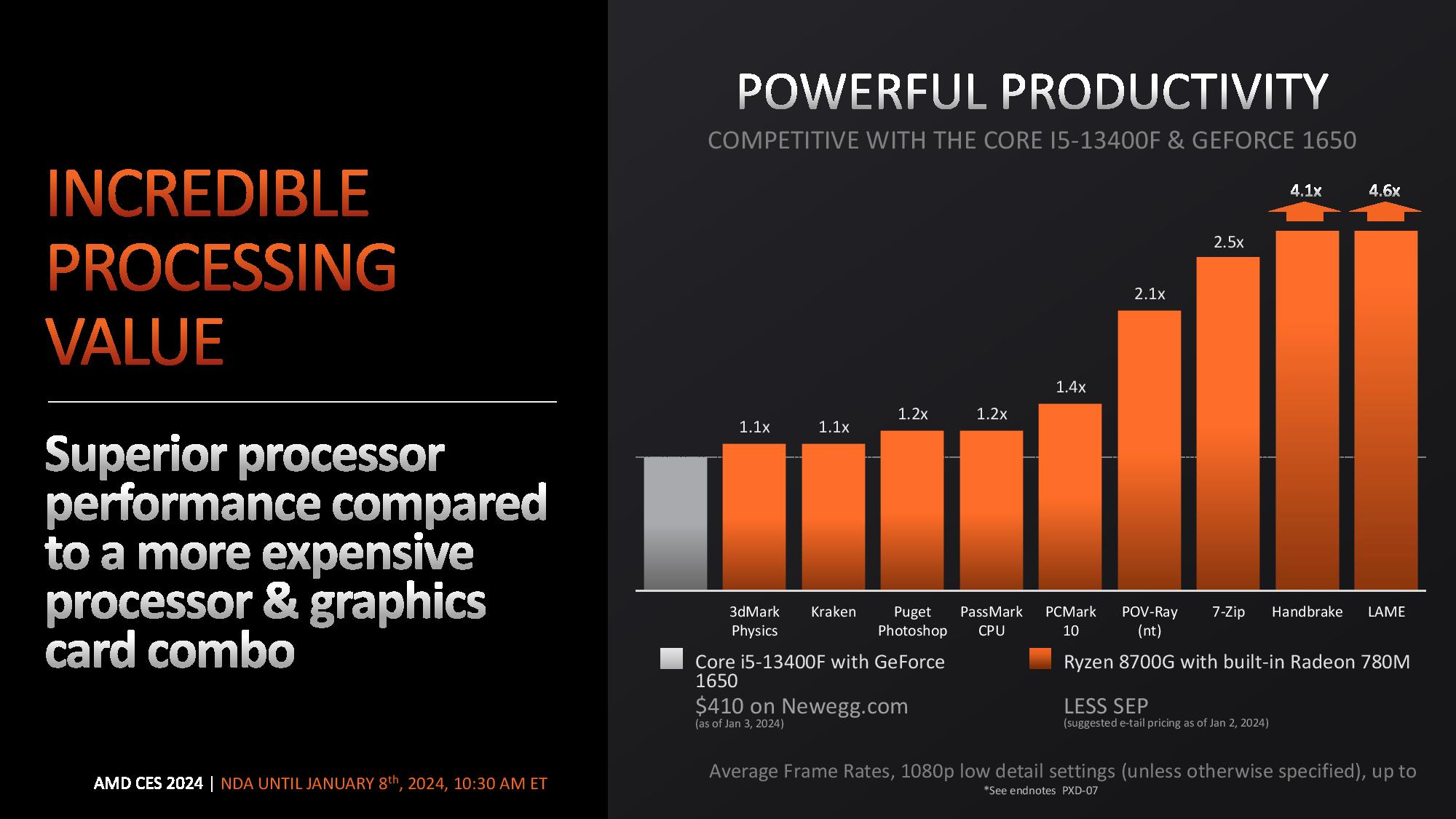


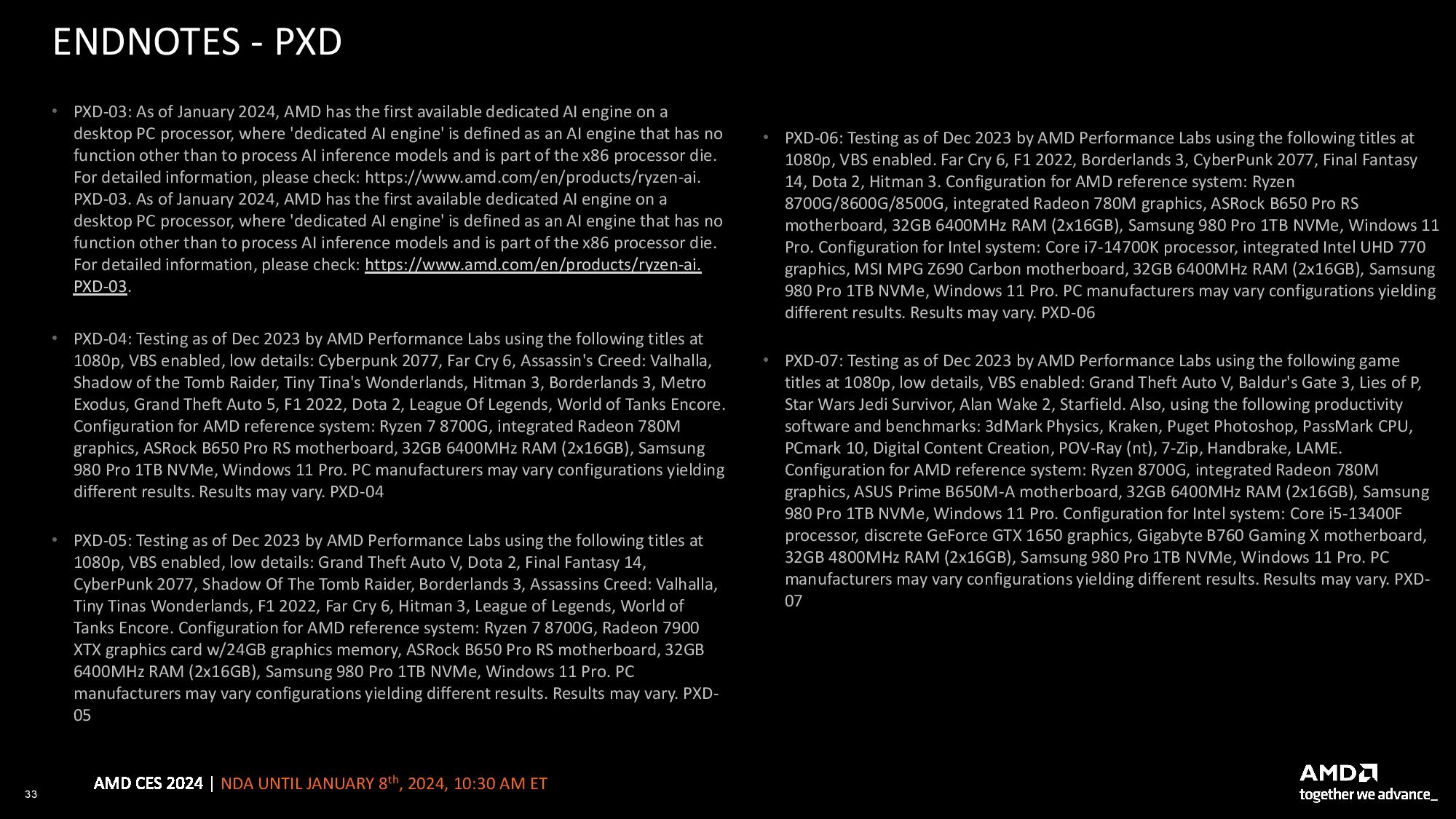
AMD provided these benchmarks, and as with all vendor-provided benchmarks, we should take them with a grain of salt. We’ve included the test notes at the end of the album.
AMD’s benchmarks comprise a spate of gaming titles, showing impressive peak framerates that often easily exceed 60 fps in many titles, like Hitman 3, Borderlands 3, and Shadow of the Tomb Raider. Jumping to easier eSports-class fare like DOTA 2 and League of Legends shows framerates exceeding 150, with the chip breaking 500 fps in World of Tanks Encore. Naturally, these gaming benchmarks were run at the lower fidelity settings expected from this class of processor, but the results show that Ryzen 8000G can deliver impressive performance in many titles.
AMD also shared benchmarks versus the UHD 770 graphics engine present in Intel’s Core i9 and i7 processors. It’s well known that the Intel comparables have woefully inadequate iGPUs for gaming, so it isn’t surprising to see the Ryzen 7 8700G and Ryzen 5 8600G deliver up to 4x and 3.4x more gaming performance, respectively.
At this price point, some enthusiasts opt for lower-end CPUs, like the Intel Core i5-14000F, paired with a lower-end graphics card, like the combo highlighted in these results. As shown above, AMD claims its Ryzen 7 8700G can largely outperform that combo for significantly less cash. AMD also has a series of benchmarks touting its 700M series graphics paired with its HYPR-RX and Fluid Motion Frames features enabled, thus allowing previously unplayable titles, like Star Wars Jedi: Survivor and Starfield, among others, to play with acceptable performance.
Finally, the lineup wouldn’t be complete without productivity tests, and here we can see that the Ryzen 7 8700G beats the Intel CPU + Nvidia GPU combo handily in a wide range of commonly used applications, like 7-zip, Handbrake, and Lame, among others.
Thoughts
AMD last updated its desktop PC APUs with the Ryzen 5000G series processors back in 2021, so the new Ryzen 8000G series is a long-overdue update to one of its most popular lineups. Intel doesn’t have any directly comparable processors to tackle AMD’s potent APU lineup — you’ll have to buy a lower-end CPU and pair it with a low-end GPU to find comparable performance — leaving AMD to dominate this segment uncontested.
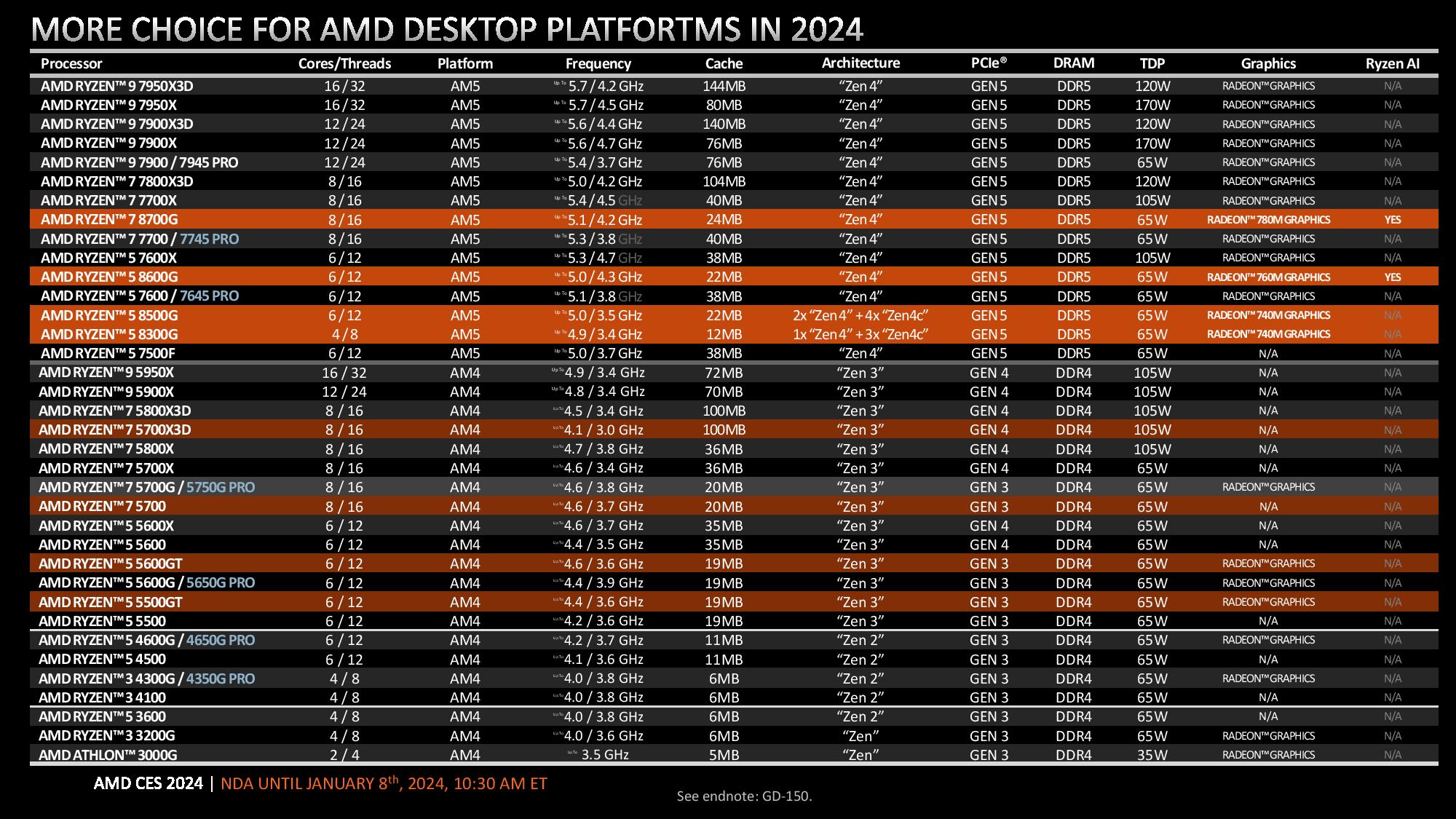

AMD’s Ryzen 8000G series brings a disruptive new in-built AI acceleration engine to desktop PCs for the first time, opening up new possibilities. There are already over 100 AI-accelerated applications available in the market, and you can also use local AI models with the XDNA NPU. However, while deploying AI models for local use confers performance, security, cost, and efficiency benefits, it can be a daunting task.
AMD’s new Ryzen AI Software suite is designed to allow both enthusiasts and developers to deploy pre-trained AI models on its silicon with a one-click approach that greatly simplifies the process. Users can select machine learning models trained on frameworks like PyTorch or TensorFlow and use AMD’s Vitis AI quantizer to quantize the model into an ONNX format. The software then partitions and compiles the model, which runs on the Ryzen NPU. The Ryzen AI Software is available now for free, and AMD also has a pre-optimized model zoo on Hugging Face available.
AMD’s new chips should also deliver a big leap forward in gaming and productivity application performance, too, while bringing its APU lineup up to modern standards with support for AM5’s DDR5 and PCIe 4.0 connectivity. With competitive pricing and bundled coolers for all three models, these chips look exceedingly popular when they arrive on January 31. As you can imagine, we’ll have our own reviews soon. Stay tuned.

Paul Alcorn is the Editor-in-Chief for Tom's Hardware US. He also writes news and reviews on CPUs, storage, and enterprise hardware.
-
usertests ReplyThe XDNA engine delivers roughly the same 39 TOPS of performance as the mobile variants
Only 16 TOPS. 39 TOPS is some theoretical combined performance of CPU + iGPU + XDNA1.
As for XDNA clocks, I wonder if it has base/turbo.
The chips also support the PCIe 5.0 interface, a huge improvement over the PCIe 3.0 found on the prior-gen APUs. Notably, AMD’s latest mobile variants, which largely share the same design, only support PCIe 4.0. That means AMD has either updated the PCIe root complex with the 8000G desktop models, or merely runs the PCIe lanes on the mobile models at a lower speed than it could (which would make sense for mobile).
Completely unexpected, neat.
AMD also shared benchmarks versus the UHD 770 graphics engine present in Intel’s Core i9 and i7 processors.
It sure fell flat in Far Cry 6 they included for fairness. -
George³ Definitely start prices seems right numbers. Was rumors for to be higher.Reply
When got first few monthly salaries in my live will got small cheap sweet computer without dGPU. With 8600G or with 8700G if it's price decrease to time that I will have cash. -
artk2219 Reply
It makes sense that it would share the same PCIE 5.0 interface, its what zen 4 was designed with, and since these chips are just tweaked zen 4, it should come with it by default. That said, guess which range of chips wont be getting a PCIE 6 upgrade down the line hah, at least not until AM6.usertests said:Only 16 TOPS. 39 TOPS is some theoretical combined performance of CPU + iGPU + XDNA1.
As for XDNA clocks, I wonder if it has base/turbo.
Completely unexpected, neat.
It sure fell flat in Far Cry 6 they included for fairness. -
George³ Replyartk2219 said:It makes sense that it would share the same PCIE 5.0 interface, its what zen 4 was designed with, and since these chips are just tweaked zen 4, it should come with it by default. That said, guess which range of chips wont be getting a PCIE 6 upgrade down the line hah, at least not until AM6.PCI-Express:Gen 4, 20 Lanes
(CPU only) TPU database. -
artk2219 https://www.tomshardware.com/news/amd-zen-4-ryzen-7000-release-date-specifications-pricing-benchmarks-all-we-know-specsReply
https://www.anandtech.com/show/17585/amd-zen-4-ryzen-9-7950x-and-ryzen-5-7600x-review-retaking-the-high-end/3
All Ryzen 7000 series desktop chips come with DDR 5 and PCIE 5 by default, im surprised TPU hasn't caught that, they're usually pretty good at keeping their stuff up to date. That said, the mobile side may be different, im pretty sure the 7040, 8040, etc have pcie 4.0, but getting detailed information about those is difficult. -
George³ Reply
Yes for DDR5, yes for PCIe 5.0 for Ryzen 7000X and non X because its are part of mainline. 8000G series are monolith APU with it's own design. You see that has much smaller amount of caches compared to 7000/X series and this few other differences for version and number of PCIe lanes.artk2219 said:https://www.tomshardware.com/news/amd-zen-4-ryzen-7000-release-date-specifications-pricing-benchmarks-all-we-know-specs
https://www.anandtech.com/show/17585/amd-zen-4-ryzen-9-7950x-and-ryzen-5-7600x-review-retaking-the-high-end/3
All Ryzen 7000 series desktop chips come with DDR 5 and PCIE 5 by default, im surprised TPU hasn't caught that, they're usually pretty good at keeping their stuff up to date. That said, the mobile side may be different, im pretty sure the 7040, 8040, etc have pcie 4.0, but getting detailed information about those is difficult. -
artk2219 Reply
Fair enough, my thought process was that since they were using desktop Zen 4 as the base it would keep as many basic features as possible, so you're not redesigning everything. Since PCIE 5 is included with the IO die on the desktop cpu', that feature parity would carry over since it was likely a bigger redesign than it was worth. Then again it doesn't even matter since these are likely to be paired with A620 or B650 (non extreme) boards which either flat out dont, or only optionally support PCIE 5.0. The 600 series chipsets are kind of weird in that regard.George³ said:Yes for DDR5, yes for PCIe 5.0 for Ryzen 7000X and non X because its are part of mainline. 8000G series are monolith APU with it's own design. You see that has much smaller amount of caches compared to 7000/X series and this few other differences for version and number of PCIe lanes.
https://www.tomshardware.com/news/amds-a620-chipset-quietly-arrives-without-full-support-for-65w-plus-cpus -
rluker5 Intel has had AI in their desktop chips for years now. They call it gaussian neural accelerator. The first one I personally had I got in 2021.Reply
Not as powerful as the latest AMD iteration but it does exist. I've heard it is used for voice recognition. -
thestryker The pricing is exactly what I expected and inherently isn't a problem given the CPU stack. The problem is that the only way to get the best graphics is by buying the best APU. Unless you're space constrained (or if you're trying for minimal power usage) to the point you cannot add a discrete card it makes no sense to buy the 8700G for graphics performance. You'd be better off buying a 7600, saving the $130, and scraping together the rest of the money for something like a RX 6600/Arc A750.Reply
I'm glad these exist as better integrated graphics on desktop is a welcome sight, but I'd be much happier if the best graphics were available across the stack, or at the very least the top two.